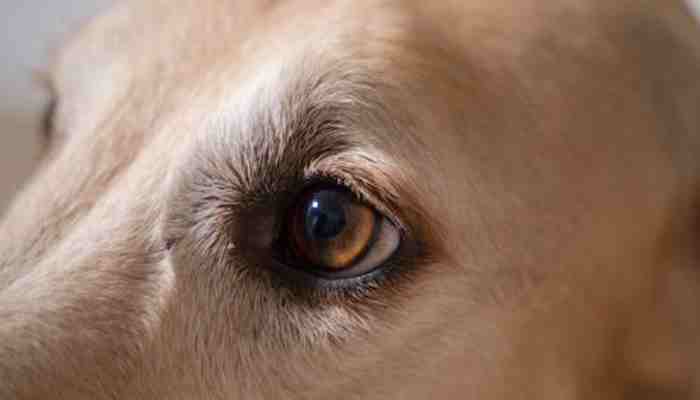Our furry friends have a way of tugging at our heartstrings with their big, expressive eyes. But just like us, dogs can experience a range of eye disorders that can impact their vision and overall health. From common conditions such as dry eye and cataracts to more serious issues such as glaucoma and keratitis, understanding and treating these eye disorders is essential for ensuring our dogs live happy and healthy lives. In this article, we’ll take a deep dive into some of the most common dog eye disorders, their causes, symptoms, and treatment options, so you can be well-informed and prepared to give your furry friend the best possible care.
Conjunctivitis, or pink eye, is a common eye disorder in dogs. It occurs when the conjunctiva, the thin membrane that lines the eyelids and covers the white of the eye, becomes inflamed. Symptoms include redness, swelling, and discharge from the eye. Conjunctivitis can be caused by allergies, bacterial or viral infections, or even foreign objects in the eye. Treatment may include eye drops, antibiotics, or anti-inflammatory medication, depending on the cause of the conjunctivitis.
Keratitis
Keratitis is a condition in dogs that refers to inflammation of the cornea, the clear outer layer of the eye. Keratitis can be caused by a variety of factors, including injury, infection, or underlying health conditions such as autoimmune disorders. Symptoms of keratitis in dogs can include redness, discharge, squinting, and cloudiness or opaqueness in the cornea.
Treatment of keratitis in dogs depends on the underlying cause of the inflammation. In some cases, topical or oral medications may be prescribed to reduce inflammation and manage pain. Antibiotics may also be prescribed to treat any underlying infections that may be contributing to the keratitis.
In more severe cases, surgery may be necessary to repair damage to the cornea or to remove any foreign objects that may be causing irritation. It’s important to seek veterinary care promptly if you suspect your dog may have keratitis, as early diagnosis and treatment can help prevent further damage to the eye.
Glaucoma
Glaucoma is a condition that affects dogs and is characterized by an increase in pressure within the eye, which can lead to damage of the optic nerve and vision loss. Glaucoma can be caused by a variety of factors, including genetics, eye injury, or underlying health conditions. Symptoms of glaucoma in dogs can include redness, cloudiness in the eye, pain or discomfort, and a change in the size or shape of the eye.
Unfortunately, glaucoma cannot be cured, and treatment focuses on managing the condition to prevent further vision loss. Treatment options may include eye drops or oral medications to lower the pressure within the eye, as well as surgery to reduce fluid buildup or drain excess fluid. In severe cases, the affected eye may need to be removed to prevent further damage to the optic nerve.
Cataracts
Cataracts are a common eye disorder in dogs that occur when the lens of the eye becomes cloudy, causing vision loss. Cataracts can be caused by a variety of factors, including genetics, ageing, or trauma to the eye. Symptoms of cataracts in dogs can include cloudiness in the eye, difficulty seeing, and bumping into objects.
Fortunately, cataracts can be surgically removed in many cases, with the goal of restoring vision in the affected eye. During the surgery, the cloudy lens is removed and replaced with an artificial lens. While cataract surgery is generally safe and effective, it does require general anaesthesia and a period of post-operative care, including administering eye drops and monitoring the dog for any complications.
In some cases, cataracts may not require surgery if they do not significantly affect the dog’s vision or quality of life. However, if left untreated, cataracts can lead to other eye problems, such as glaucoma or retinal detachment.
Dry Eye
Dry eye, or keratoconjunctivitis sicca (KCS), is a common condition in dogs that occurs when the tear glands do not produce enough tears to keep the eyes moist. This can be caused by a number of factors, including certain medications, autoimmune disorders, or ageing. Symptoms of dry eye in dogs can include redness, discharge, and a thick, stringy mucus in the eye. The eyes may also be more susceptible to infections, and over time, the cornea can become damaged, leading to vision loss.
Fortunately, there are several treatment options available for dogs with dry eye. The primary treatment is the use of artificial tears, which can be administered several times a day to keep the eyes moist. In some cases, cyclosporine eye drops may be prescribed to help stimulate tear production. Antibiotics may also be prescribed to treat any secondary infections that may have developed as a result of the dry eye.
It’s important to note that while dry eye can be managed, it is a chronic condition that requires ongoing care. Owners of dogs with dry eye should be prepared to administer eye drops or ointments as directed by their veterinarian, and regular check-ups with the vet may be necessary to monitor the dog’s eye health. W
Preventing eye disorders in dogs involves regular check-ups with your veterinarian, maintaining good hygiene, and keeping your dog away from hazardous objects. Cleaning your dog’s eyes daily with a damp cloth can also help prevent eye disorders by removing debris and dirt from around the eye.
In conclusion, dealing with common dog eye disorders can be challenging, but it’s important to be proactive in preventing and treating them. By recognizing the signs of common eye disorders in dogs and seeking prompt veterinary care, you can help ensure that your furry friend enjoys a lifetime of healthy vision.




